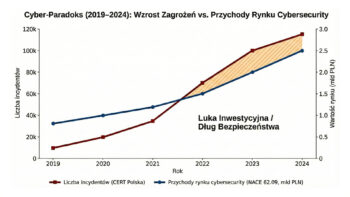In 2025, artificial intelligence is still one of the main drivers of digital transformation strategies. Budgets are increasing, and so are the number of projects described in reports to boards of directors. Presentations are full of examples to show how AI can transform the operations of organisations.
The problem is that, in many companies, the results of these initiatives still do not translate into tangible business value.
Rather than a real impact on operational performance, what is seen is scattered pilot projects that never make it to key processes. As a result, companies are increasingly falling into the trap of the so-called perpetual pilot syndrome.
It’s a situation where investments are growing, but the return is difficult to capture because there is a lack of integration with day-to-day operations, and the approach to data and measuring outcomes remains fragmented.
Many CIOs admit that the problem is not with the technology itself. More often it is the lack of a clear plan of what to do with it. Projects are judged on the fact of implementation rather than the results achieved.
AI operates in isolation from mainstream workflows, leaving its potential untapped. It also often relies on data distributed between different systems, making it difficult to scale.
Change requires a shift in focus. Rather than focusing on what new tool can be tested, it is worth asking which decisions within the company have the greatest impact on key metrics and how AI can help make them better.
It is also crucial to include measurement of outcomes from day one of a project. Companies that define measurable objectives at the start are more likely to achieve demonstrable results, and can therefore justify subsequent investments more effectively.
Even the best-planned AI project will fail if the data on which it operates is inconsistent or outdated.
Many companies are still struggling with fragmented structures and inconsistent standards, which limits the ability to create real-time systems. In an era where more and more solutions are agent-based, the pressure for data cleanliness and consistency will be even greater.
CIOs who think long-term are therefore starting to invest in architectures that enable full data integration.
Build connected sources, implement mechanisms to ensure semantic compatibility and create processes for continuous quality verification. It is these foundations that will determine whether AI will be scalable or remain locked within single experiments.
Moving a project from the testing phase to enterprise-wide scale requires both technical and organisational maturity. Clear conditions for the end of the pilot phase are needed, as well as structures to transfer the developed solutions to everyday work.
Centres of excellence, which codify best practice and help other teams replicate proven approaches, are playing an increasingly important role in many companies.
It is no less important that AI is part of everyday processes and not an add-on alongside them. Therefore, MLOps tools and procedures that allow models to be monitored, maintained and updated already in the production environment are becoming increasingly important.
Teams combining technology and business expertise also play a key role. The collaboration of IT experts, data analysts and operational leaders ensures that AI solutions respond to the real needs of the business, rather than just internal technological ambitions.
CIOs often fear that the introduction of governance rules will slow down the implementation of AI. In practice, the opposite is true. Well-designed controls increase the rate of scaling because they avoid costly mistakes and build confidence in new solutions.
This is not only about setting rules for the design of models or ensuring that they can be audited, but also about putting in place mechanisms that allow human intervention at critical moments in the operation of the system.
Companies that treat governance as an integral part of the architecture, rather than an add-on option, gain an advantage in the speed of implementation. They can quickly adapt further solutions, knowing that they comply with internal standards and regulations.
Although today most AI implementations focus on specific use cases, the CIO’s horizon should look further ahead. The next stage of development will be agent-based systems that autonomously plan, make decisions and execute actions on behalf of the organisation.
This, however, requires not only advanced technology, but also a solid foundation in the form of consistent data, a modern IT architecture and an organisational culture focused on measuring results.
Companies that are already able to turn experiments into real ROI will be better equipped to take advantage of agent-based AI when it enters the business mainstream.
In a world where competitive advantage increasingly depends on speed of adaptation, such preparation can determine who becomes a leader and who is reduced to an observer.












